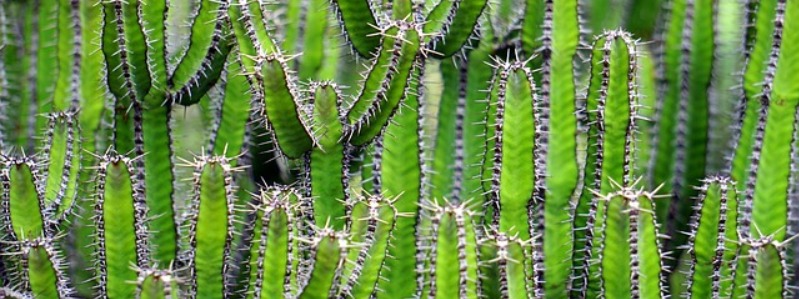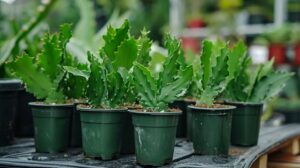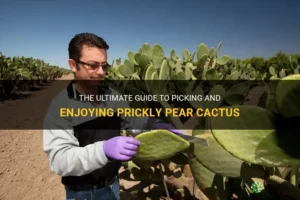Texas is renowned for its vast landscapes and diverse flora, among which the cactus family holds a special place. These resilient and adaptable plants are not merely adaptations to arid conditions; they symbolize the rugged beauty of the region. For those enamored with these distinctive species, understanding the types of cacti found in Texas becomes not just a matter of interest, but a journey into the heart of this unique ecosystem. This article delves into the variances among Texas cacti, showcasing what you might encounter.
Exploring Different Varieties of Texas Cacti
The state of Texas boasts a plethora of cactus species, each with its own distinguishing characteristics. From the iconic prickly pear to the towering saguaro, the diversity is astounding. Like nature’s own sculptures, these plants flourish in the challenging terrains of deserts, hills, and even along riverbanks.
Prickly Pear: The Quintessential Texan Cactus
One of the most recognizable cacti in Texas is the prickly pear (Opuntia spp.). With its flat, paddle-shaped pads and vibrant flowers, it is a staple in both the wild and cultivated settings. There are multiple varieties, such as the Gulf Coast prickly pear and the Texas prickly pear. Each species showcases a unique coloration, varying from green to reddish hues, particularly during blooming season.
What sets the prickly pear apart is not merely its aesthetic appeal; it’s also a source of nutrition. The pads (or nopales) and fruit (tunas) can be harvested for culinary use. They are commonly used in traditional Mexican dishes and have found their way into various recipes, captivating food enthusiasts looking to incorporate authentic and healthy ingredients.
Understanding the ecological advantage of prickly pear is important as well. This cactus provides food and habitat for numerous wildlife species, from birds to insects, thereby thriving as an integral component of the local ecosystem.
Saguaro: A Giant of the Desert
While the saguaro cactus (Carnegiea gigantea) is often associated with Arizona, small populations can also be found in the western reaches of Texas. This towering cactus, which can reach heights of up to 40 feet, is known for its distinct arm-like branches that extend skyward, offering an iconic silhouette against the desert landscape.
The saguaro’s impressive stature belies its intricate and fascinating lifecycle. It takes decades to reach maturity, with new arms appearing only after the cactus has reached a certain age. During the bloom period, usually in late spring, the saguaro showcases stunning white flowers that are both striking and significant, as they serve as essential pollinators for many species, including bats and birds.
As a drought-adapted giant, the saguaro employs remarkable strategies to conserve water. It can store significant amounts of water in its tissues, absorbing rain during infrequent showers, which allows it to endure prolonged dry spells. This characteristic makes it an enduring symbol of resilience in the harsh desert environment.
Barrel Cactus: Nature’s Water Reservoir
The barrel cactus (Ferocactus spp.) typically exhibits a stout, cylindrical form, often adorned with sharp spines. With its ribbed exterior and vibrant flowers—ranging from yellow to red—this cactus captivates those who venture into its native habitats.
A fascinating aspect of the barrel cactus is its ability to retain moisture. This characteristic can often mislead unsuspecting travelers, as the fruits found on some barrel cacti are sometimes consumed, albeit cautiously, due to their potential toxicity when not prepared correctly. In historical contexts, indigenous peoples utilized the barrel cactus both as a food source and as an emergency means of hydration. Understanding the past significant uses of these cacti helps highlight their importance in survival scenarios.
Additionally, the barrel cactus represents an essential ecological link in its environment, providing sustenance for local fauna, including rodents, birds, and even larger mammals. Its ability to thrive in such harsh conditions highlights the resilience and adaptability of desert flora.
Finding the Right Cacti for Your Collection
For enthusiasts considering adding a touch of Texas to their gardens, selecting the right cacti is crucial. Consider factors like climate, soil type, and available sunlight when making your selection. Many of these species, such as prickly pears and barrel cacti, can thrive in various conditions, making them suitable for a range of landscapes and climates.
Moreover, understanding maintenance needs cannot be overstated. Some cacti require minimal watering and can endure neglect, while others might need more attentive care, especially in terms of soil drainage and exposure to direct sunlight. Always opt for native species when possible, as they are better adapted to your local environment and support local ecosystems.
Conclusion: Embracing the Beauty of Texas Cacti
Trekking through Texas offers not just the opportunity to appreciate the majestic beauty of its landscapes but also a chance to engage with its diverse species of cacti. The prickly pear, saguaro, and barrel cactus epitomize the endurance and artistry of nature’s design, providing habitat and sustenance for wildlife while enhancing the region’s biodiversity. By familiarizing yourself with these striking plants, you deepen your connection to the Texan environment while enriching your understanding of its complex ecology. Whether you’re a curious traveler, a passionate gardener, or an amateur naturalist, the world of Texas cacti is irrevocably fascinating and worth exploring.





Leave a Comment